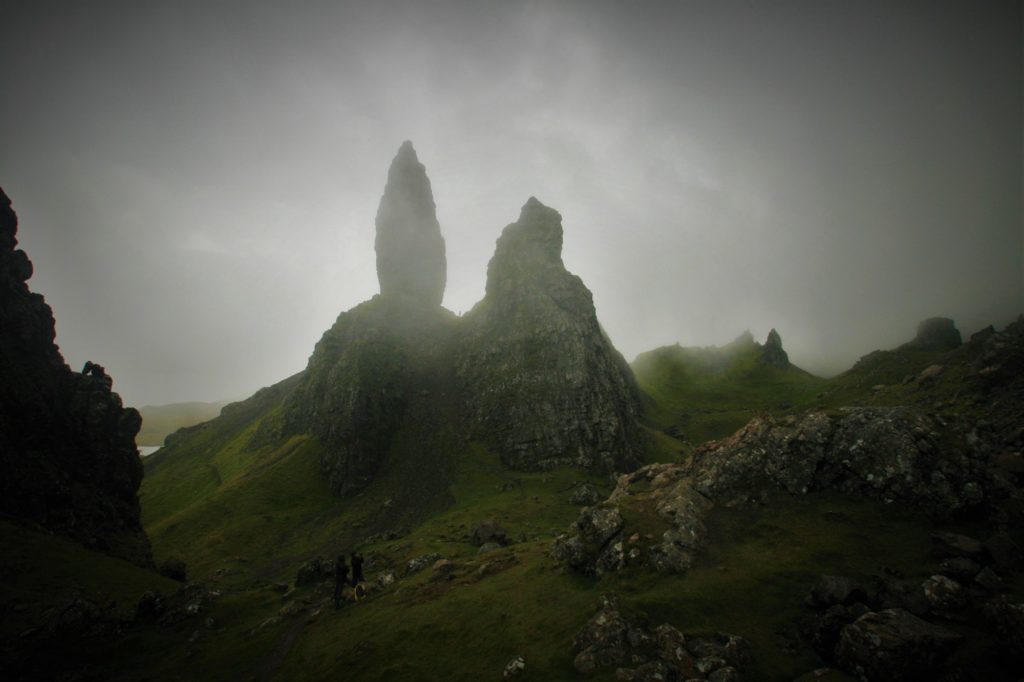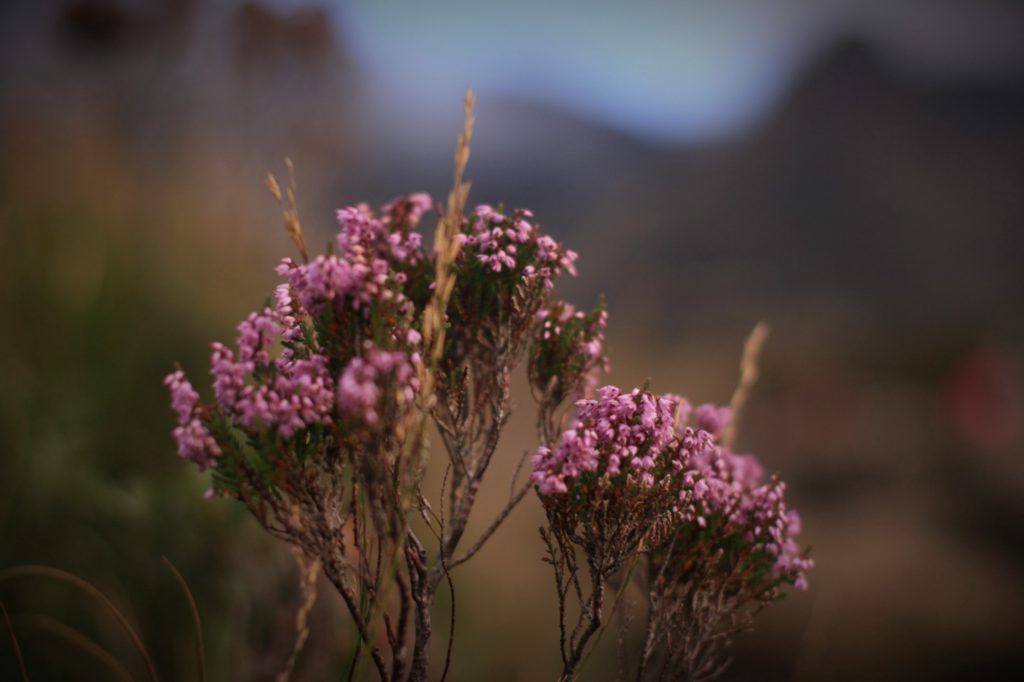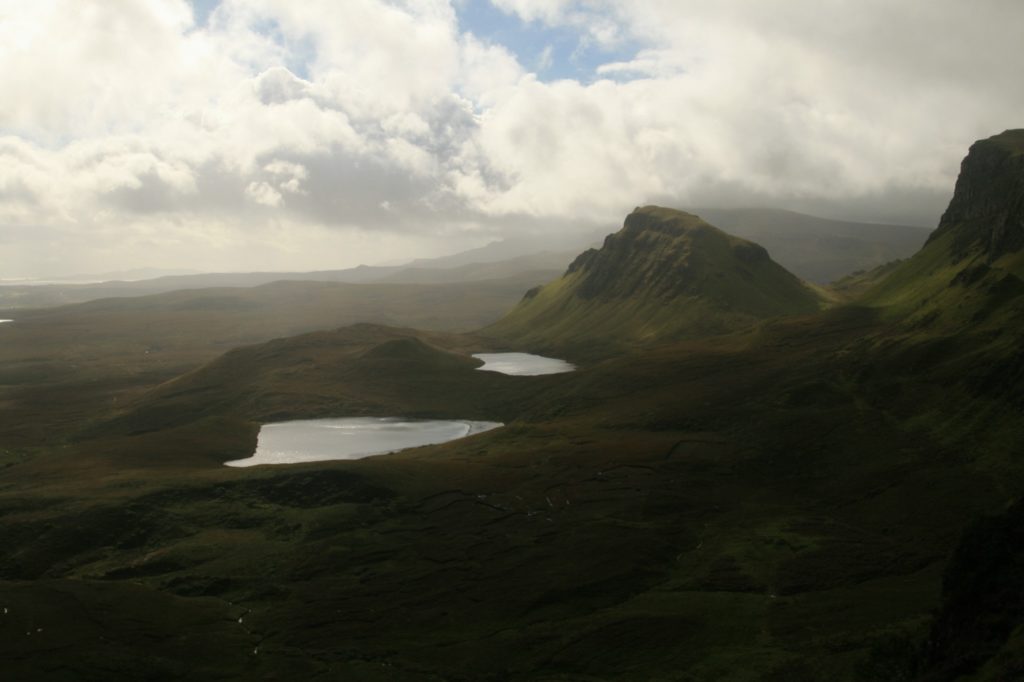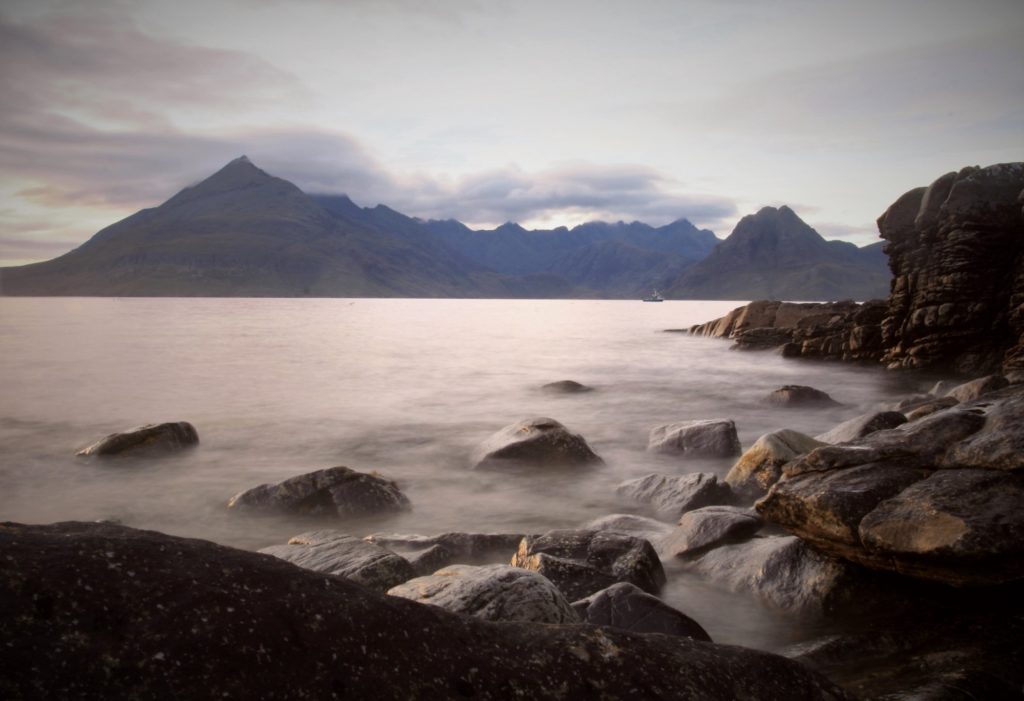There’s something compelling about Skye. So compelling in fact, that the island has been become stretched to capacity by visiting tourists in recent weeks. What’s all the fuss about?
It’s a beautiful place with some serious history, and real weather.
A previous visitor from the South referred to the latter as “One continued storm”. At this point Dr Samuel Johnson may well have also reflected that ‘When a man is tired of London, he is tired of a life where solitude, clean air, and stunning natural beauty are in scarce supply.’
Not so on Skye.

Skye is halfway up the ragged Western coast of Scotland, a middle knuckle in the Hebridean hand that reaches out into the Atlantic, grasping at Northeastern Ulster. In many ways it’s a Scandinavian island, far more akin to the harsh rocky landscapes of Iceland or The Faroes than the rolling fields of the Borders or the Central Belt.
With the Quiraing, Neist Point, Kilt Rock, Loch Coruisk, Faerie Glen, Dunvegan Castle and Sound of Sleat beach, there’s no lack of varied scenery.
With the exception of colour.
It appears almost everything on the island is composed of charcoal browns, scrubby greens and the pink/purple hue of heather.

As befitting an island represented for many years by the late, great Charles Kennedy MP, its history is not short of characters: defiant Jacobites like Flora MacDonald, the mythical martial arts teacher Scáthach, or Donald Munro the blind revivalist.
Yet today it is largely empty, its population tiny, bar the odd fidgeting horde of camera-wielding tourists.
The sheer peace and solitude make it difficult to imagine 25,000 people living here in its heyday.
Its remoteness doesn’t explain this absence entirely, though it is four solid hours’ drive from Glasgow to Eilean Donan Castle at Kyle of Lochalsh (or to the Mallaig ferry via the White Sands of Morar).
Nor is this adequately explained by the brutality of the climate, best emphasised by the fact that Talisker have to source their barley from the mainland, as — to quote one of their employees — “nothing grows here”. It’s little wonder that Skye’s most famous tipple is one that warms your chest after a bitter day in the cold.
The Clearances hit hard. In the late 18th to early 19th century, due in varying degrees to ruling-class greed, anti-Jacobite political repression and poor harvests, huge swathes of the Highlands’ and Islands’ croftingpopulation departed — forcibly or otherwise.
They left for the Lowlands, Nova Scotia, New Zealand, Australia and the US, to be replaced by more profitable — and less rebellious—sheep.
The opposition of the radical wing of the Liberal party, (long since gone) and the Free Church of Scotland (its presence still felt in the Western Isles) was not sufficient to stem the tide.

As the people left, so too did Highland culture, though the Gaelic languagelives on, imprinted on the road-signs, alongside the place names that also bear the hallmarks of its ancient Norwegian rule.
Closely connected with the other Celtic languages, Scots Gaelic is most similar to its Irish namesake and Manx, unsurprising given Skye’s periods of rule by Dal Riata and the Kingdom of the Isles. Derivations of it are even spoken as far away as Eastern Canada.
And what of her people today?
Danny MacAskill, one of Skye’s most famous living sons (and whose namesakes are involved in the stories of both The Clearances and Talisker Distillery), brought Skye to a global audience in 2014, racking up 40 million+ views on YouTube in the process. However, few can make a living as a professional trials cyclist. Much of the island’s employment is derived from tourism and many leave to study, live and work elsewhere. Opportunity is relatively limited, and — as one local put it—
‘Yes it’s depressing that everyone leaves, but it’s more depressing to come back home at Hogmanay and see what the young people who haven’t left end up doing’.
A revival of the Georgian-era kelp-farming boom seems unlikely, though perhaps a modern equivalent of crofting — the ‘gig economy’— with the right marketing, modern infrastructure and some high-speed broadband, might thrive in the future.

Do yourself a favour; go to Skye. Maybe when the crowds die down. But go.
Go for the landscape, go for the peaceful solitude, go for the sense of history.
And do your best to avoid the infernal midges.
The military allegedly use Avon ‘Skin So Soft’ like the rest of us to combat them on training exercises. There’s a midge forecast — use it. Take advice on times of the year to steer clear. There are some battles in life you can’t win. But don’t let them put you off going.
